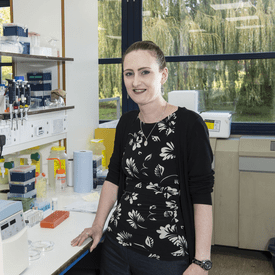Project Leader
Crop Genetics
Diane studies (re-)emerging plant pathogens that pose a significant threat to agriculture. For instance, they have numerous projects studying the wheat yellow rust pathogen, Puccinia striiformis f. sp tritici that is a substantial threat to wheat production worldwide and more recently re-emerged as a major constraint on UK agriculture.
In their lab, they use an array of different approaches to study plant pathogens to improve the understanding of how pathogens cause disease, including:
- Molecular genetics
- Microbiology
- Plant pathology
- Population genetics
- Genomics
They’re especially interested in how pathogens adapt to changing environments such as new host varieties. This can be studied by characterising and analysing the genes encoding pathogen effector proteins.
Plant pathogens deliver effector proteins to their hosts to inhibit plant defence responses and promote parasitic colonization. On certain plant varieties, effectors that act within the host cell can be recognised by plant proteins, encoded by resistance genes, which initiate defence responses.
In one recent project, the group pioneered a revolutionary genomics-based pathogen surveillance technique that uses the latest DNA sequencing technology to generate high-resolution data quickly for describing the diversity in a pathogen population directly from infected field samples.
Using this new technique and in collaboration with NIAB in Cambridge, they uncovered a dramatic shift in the population of yellow rust in the UK in recent years, largely due to an influx of fungal spores from outside the country.
This information is essential to help breeders to develop wheat varieties that are resistant to the wider range of yellow rust isolates that they now find in the field.

